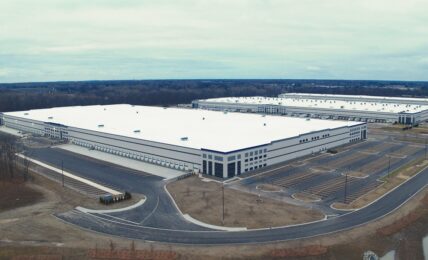
By Kevin O’Connell, Sustainability Reporting and Assurance Leader, and Ron Kinghorn, Sustainability Strategy and Operations Leader, PwC
Today’s CEOs are charged with an urgent priority: embedding sustainability into their core strategies to unlock pathways to new investment, drive innovation and fuel growth. In a rapidly changing environment, where exceeding the 1.5°C threshold becomes increasingly likely, companies need to both mitigate risks and adapt their business models to withstand climate impacts. Regulatory demands, such as the EU’s Corporate Sustainability Reporting Directive (CSRD), are pushing nearly 50,000 companies toward greater transparency, with detailed requirements on over a thousand data points—ranging from climate action to circular resource management.
To navigate these demands, CEOs should make a bold business case for sustainability that’s tightly focused on driving value and resilience. According to PwC’s CEO Sustainability Checklist, reinventing a business for a sustainable future starts with four mission-critical actions: assessing energy demand, identifying risks, finding innovation opportunities and overhauling data infrastructure. By prioritizing these actions, companies can design resilience into their operations and better prepare for future uncertainties.
Unlock Value Through Smarter Resource Use
To achieve real value from sustainability initiatives, companies can take steps to re-evaluate their resource use and energy consumption. This means addressing the “energy trilemma”—the challenge of securing a reliable energy supply, reducing emissions and cutting costs all at once.
Beyond cost savings, effective demand-side actions can enhance supply reliability, reduce emissions and even create new revenue streams. Assessing where new technologies and ideas can be introduced is a key step in tapping into these opportunities. Many demand-side strategies involve simple infrastructure or operational adjustments—quick wins that help drive business value and support long-term sustainability goals.
Building a Data Foundation for AI-Driven Sustainability
With the rapid evolution of sustainability reporting regulations, data infrastructure has become a critical hurdle. PwC’s Global CSRD Survey 2024 reveals that data availability and quality are the biggest barriers to meeting these standards. Without consistent, verifiable data across the value chain, it can be difficult to accurately track emissions, energy use and resource impacts. And as AI becomes core to sustainability efforts, building a solid data foundation is critical. This infrastructure can support the growing use of AI to drive productivity gains, streamline resource optimization and unlock innovative approaches to sustainability.
Given the urgency of these challenges, a thorough review of an organization’s data infrastructure is essential. The Global CSRD Survey reveals only 26% of companies have centralized systems for managing sustainability data. CEOs can prioritize establishing detailed, cross-functional plans to develop or upgrade data systems, implementing assurance processes and structuring teams focused on ESG reporting. This may involve bolstering existing financial data systems or creating a central “data hub” that integrates data collection, management and reporting functions. To meet the demands of expanding and evolving regulatory requirements, however, these systems should also reach beyond traditional organizational limits to incorporate the broader value chain.
Uncover Hidden Risks
Another key step for CEOs is to use risk modeling tools to identify vulnerabilities across operations and supply chains. This approach can uncover risks at each stage—from sourcing to logistics—enabling companies to concentrate on the most critical areas. By revealing these hidden vulnerabilities, companies can drive sustainable, transformative change, building resilient, well-controlled supply chains that can withstand disruptions and adapt to future challenges.
Climate change is already posing significant threats to essential commodities such as food, metals and minerals, as rising temperatures and prolonged droughts affect productivity and safety. As companies face these challenges, risk modeling tools provide insights that can strengthen resilience. Climate risk or weather-related demand can also fuel growth or revenue opportunities—for example, OEMs can sell more spare parts to replace those damaged by weather events. And new innovations, like hurricane-resistant materials and specialized insurance products, can support customers amidst current and future climate risks.
Innovate to Meet Market Demand
Many may assume that reducing a company’s environmental impact involves costly trade-offs, but PwC’s survey shows that climate-focused actions—especially developing new, eco-friendly products—are linked to higher profit margins. PwC studies suggest that products marketed with sustainability attributes can realize 6-25%+ revenue uplift.
For CEOs, this signals a significant step: as the market pivots toward sustainability, organizations can focus on innovation to meet evolving stakeholder expectations. While challenges like balancing supply and demand for climate solutions remain, those who address them effectively can capture significant growth opportunities in a low-carbon economy.
What’s next
As regulations evolve and the call for sustainable business practices intensifies, CEOs are pivotal in guiding their organizations toward resilience and growth. Through smarter energy management, modernized data infrastructure, proactive risk identification and a commitment to innovation, leaders can position their companies for long-term success in a sustainability-focused market.

